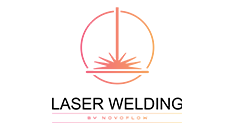What types of lasers are used for welding?
Laser welding uses a variety of types of lasers, each with different properties and areas of application. The most common types of lasers used for welding include fiber lasers, CO₂ lasers and solid-state lasers.
Fiber lasers are a commonly used laser source for laser welding. They are characterized by their high beam quality, power density and reliability. Fiber lasers can operate in both continuous and pulsed modes and are particularly well suited for welding thin sheets and fine structures.
CO₂ lasers are another common type of laser for welding. They produce an infrared beam with a wavelength of around 10 µm, making them particularly effective for welding non-metallic materials such as plastics and organics. CO₂ lasers are also capable of welding thick materials at high power and are often used in heavy industry.
Solid-state lasers are lasers in which the active medium consists of a solid material, as opposed to gas or liquid media. They offer a wide range of wavelengths and power levels and are therefore versatile for various welding applications. Solid-state lasers are characterized by their high efficiency and stability and are often used in micro- and electronics manufacturing.
Each of these types of lasers has its own advantages and disadvantages in terms of power, precision and applications. Choosing the appropriate type of laser depends on several factors, including the specific requirements of the welding application, the material being welded, and the desired weld quality. By selecting the optimal laser type, high-quality welds can be achieved that meet the requirements of the respective application.
What types of lasers are used for welding?
Laser welding uses a variety of types of lasers, each with different properties and areas of application. The most common types of lasers used for welding include fiber lasers, CO₂ lasers and solid-state lasers.
Fiber lasers are a commonly used laser source for laser welding. They are characterized by their high beam quality, power density and reliability. Fiber lasers can operate in both continuous and pulsed modes and are particularly well suited for welding thin sheets and fine structures.
CO₂ lasers are another common type of laser for welding. They produce an infrared beam with a wavelength of around 10 µm, making them particularly effective for welding non-metallic materials such as plastics and organics. CO₂ lasers are also capable of welding thick materials at high power and are often used in heavy industry.
Solid-state lasers are lasers in which the active medium consists of a solid material, as opposed to gas or liquid media. They offer a wide range of wavelengths and power levels and are therefore versatile for various welding applications. Solid-state lasers are characterized by their high efficiency and stability and are often used in micro- and electronics manufacturing.
Each of these types of lasers has its own advantages and disadvantages in terms of power, precision and applications. Choosing the appropriate type of laser depends on several factors, including the specific requirements of the welding application, the material being welded, and the desired weld quality. By selecting the optimal laser type, high-quality welds can be achieved that meet the requirements of the respective application.
